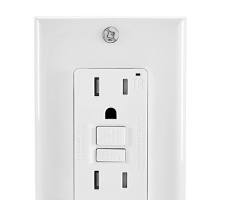Bug and mosquito zappers have become a common sight in outdoor spaces, providing a buzzing solution to the persistent annoyance of flying insects. These devices use a combination of light and electricity to attract and eliminate pests efficiently.
Here, we will delve into the step-by-step process of how bug and mosquito zappers work, and the effectiveness of these insect-eliminating devices.
Table of contents
What is a Mosquito Zapper?
Mosquito zapper, also known as a bug zapper or insect electrocution device, is an electronic device designed to attract, trap, and kill flying insects, primarily mosquitoes.
This device operates on the principle that it attracts certain insects to specific wavelengths of light, particularly ultraviolet (UV) light. While a mosquito zapper is effective in reducing mosquito populations, it’s essential to note that it may also attract and eliminate beneficial insects.
The basic components of a mosquito zapper include a light source, an electrified grid, and a collection tray. Let’s explore the various components:
Ultraviolet Light Source
Mosquito zappers typically feature a light source that emits ultraviolet (UV) light. This light is chosen because many flying insects, including mosquitoes, are naturally drawn to UV wavelengths. The light serves as a lure to attract insects towards the zapper.
Electrified Grid
Surrounding the light source is an electrified grid or mesh. This grid is charged with a high voltage, usually within 2000 to 4000 volts. When insects are attracted to UV light and come into contact with the grid, they complete an electrical circuit, leading to a sudden surge of electricity passing through their bodies.
Electrocution and Vaporization
Upon contact with the electrified grid, the insect experiences a quick and lethal electrocution. The high voltage is carefully calibrated to be lethal to insects but safe for humans and pets.
Some mosquito zappers are designed to release a small burst of carbon dioxide and water vapor upon electrocution, resulting in the vaporization of the insect’s body. This feature helps minimize the mess and makes it easier to maintain the cleanliness of the device.
Collection Tray
Below the electrified grid, there is a collection tray where the remains of the electrocuted insects fall. This tray is easily removable, allowing users to dispose of the insect debris and maintain the efficiency of the mosquito zapper.
Why Use a Mosquito Zapper?
Using a mosquito zapper can offer several benefits in the ongoing battle against flying insects, particularly mosquitoes. Here are some reasons people choose to use mosquito zappers:
Effective Mosquito Control
Mosquito zappers are designed to attract and eliminate mosquitoes efficiently. The combination of ultraviolet light and electrified grids provides an effective means of controlling mosquito populations in outdoor spaces.
Chemical-Free Solution
Unlike some other methods of mosquito control that involve the use of chemical insecticides, mosquito zappers operate with no need for harmful chemicals. This makes them an environmentally friendly option for those seeking natural pest control alternatives.
Low Maintenance
Mosquito zappers are relatively low-maintenance devices. The collection tray at the bottom of the unit captures the remains of electrocuted insects, and users can easily remove and clean the tray as needed. This simplicity makes mosquito zappers a convenient choice for those looking for hassle-free pest control.
Reduced Biting Risk
By attracting and eliminating mosquitoes, zappers can help reduce the risk of mosquito bites, which can transmit diseases such as malaria, dengue fever, and West Nile virus. This is especially valuable in regions where mosquito-borne illnesses are prevalent.
No Need for Chemical Repellents
Using a mosquito zapper eliminates the need for applying chemical mosquito repellents to the skin. Some individuals prefer to avoid topical insect repellents, and a zapper provides an alternative method of protection.
Coverage of Large Areas
Mosquito zappers are effective in covering relatively large outdoor areas, making them suitable for use in gardens, patios, decks, and other open spaces. This broad coverage can contribute to creating insect-free zones for outdoor activities.
24/7 Operation
Mosquito zappers can operate continuously, providing protection day and night. This constant operation is beneficial, especially during peak mosquito activity times such as dawn and dusk.
How Bug Zappers Work
Bug zappers typically work in three steps. Here’s how:
- Attract: The zapper emits a light that attracts insects. This light is usually ultraviolet (UV) light, which is invisible to humans but is very attractive to many insects. Some bug zappers also emit carbon dioxide (CO2) or other attractants to further entice insects.
- Electrocute: Once an insect is close enough to the zapper, it comes into contact with two electrically charged grids. The high voltage between the grids instantly kills the insect.
- Dispose: The dead insect falls to the ground or into a collection tray at the bottom of the zapper.
Limitations of Using a Mosquito Zapper
While mosquito zappers can be effective in reducing mosquito populations in certain situations, they also have limitations that users should know. Here are some of the key limitations associated with using mosquito zappers:
- Attracts and Eliminates Beneficial Insects: While they are designed to lure and eliminate mosquitoes, they can also attract and kill beneficial insects such as bees, butterflies, and other pollinators.
- Limited Range: If the zapper is not strategically placed or if there are competing light sources in the area, mosquitoes may not be drawn to the zapper, reducing its overall efficacy.
- Not Effective Indoors: Mosquito zappers are primarily designed for outdoor use. Using them indoors may not be as effective because they rely on mosquitoes being attracted to the UV light from a distance.
- Weather conditions can influence weather Dependence: Mosquito activity and the effectiveness of zappers. Rain, wind, and temperature extremes may impact the number of mosquitoes present and the zapper’s ability to attract them.
- Requires Electricity: Mosquito zappers need a power source, usually electricity, to operate. This can be a limitation in outdoor spaces where electrical outlets may not be readily available.
How Do Insects Detect Light from Mosquito Zappers?
Insects, including mosquitoes, detect light using their compound eyes, which are composed of multiple individual lenses known as ommatidia. The mechanisms by which insects are attracted to mosquito zappers involve their ability to perceive light, particularly ultraviolet (UV) light.
Here’s a breakdown of how insects detect light from mosquito zappers:
Wavelength Sensitivity
Insects have a unique sensitivity to specific wavelengths of light, and many are particularly responsive to ultraviolet light. While the human eye can see a range of colors in the visible spectrum, insects can detect ultraviolet light that is beyond our visible range.
Compound Eyes
These insects possess compound eyes that make up many ommatidia, each acting as an individual visual unit. These ommatidia contain photoreceptor cells that are sensitive to different wavelengths of light.
The collective input from these cells allows insects to have a wide field of view and a heightened sensitivity to light.
Attraction to Ultraviolet Light
Mosquito zappers are designed to emit ultraviolet light, which is highly attractive to many flying insects, including mosquitoes. The UV light emitted by the zapper serves as a powerful lure, exploiting the insects’ natural attraction to this specific wavelength.
Innate Attraction to Light
Some insects are instinctively drawn to light sources, a behavior known as phototaxis. This attraction to light can be advantageous for insects in certain ecological contexts, such as finding mates or locating food sources. However, it can become a disadvantage when artificial light sources, like mosquito zappers, lead them astray.
Are Mosquito Zappers Effective?
The effectiveness of bug zappers in reducing insect populations has been a subject of debate among scientists and pest control professionals.
While some studies have shown that zappers can effectively reduce mosquito populations by up to 50%, others have found their impact to be less significant or even negligible.
Several factors can influence the effectiveness of bug zappers, including:
- Type of insect: Bug zappers are most effective against flying insects, particularly mosquitoes, flies, and moths. They may not be as effective against crawling insects like cockroaches and ants.
- Size of the zapper: Larger zappers with a wider coverage area are generally more effective than smaller ones.
- Location of the zapper: Placing the zapper in strategic locations, such as near areas where insects gather, can enhance its effectiveness.
- Environmental factors: Wind, temperature, and humidity can also affect the performance of bug zappers.
FAQs
Yes, mosquito zappers can kill other insects besides mosquitoes. This includes flies, moths, and other flying insects.
The best location for a mosquito zapper is in an area where mosquitoes are most active. This could be near a patio, porch, or swimming pool.
You should clean your mosquito zapper once a month or so. This will help to prevent the buildup of dead insects, which can attract other insects.
Mosquito zappers work by attracting insects with light and then killing them with electricity.
Conclusion
Bug zappers offer a convenient and effective way to reduce flying insect populations, particularly mosquitoes, in outdoor settings. However, it is important to weigh the potential benefits against the drawbacks, carefully considering factors such as the impact on beneficial insects and noise production.
By understanding the science behind bug zappers, their effectiveness, and their potential drawbacks, homeowners can make informed decisions about incorporating these devices into their pest control strategies.




